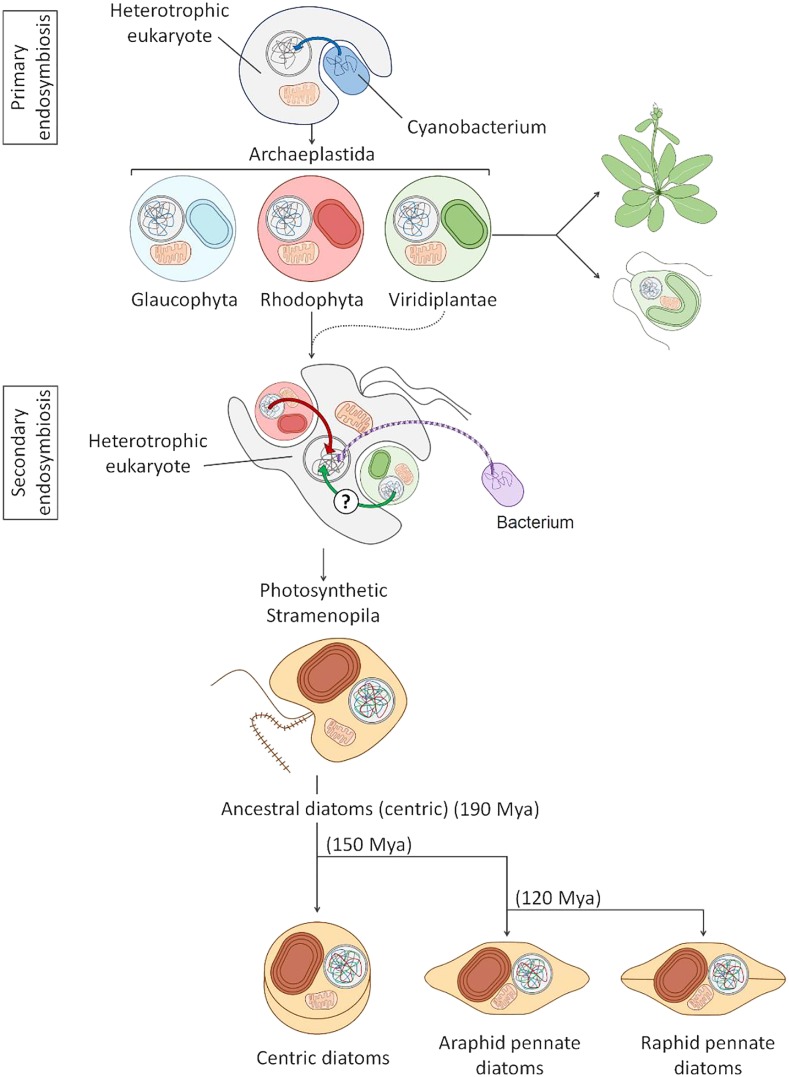Figure 3.
Simplified Scheme of the Major Events Leading to the Evolution of Diatoms through Primary and Secondary Endosymbiosis.
The initial primary endosymbiosis occurred when a heterotrophic host engulfed a cyanobacterium (represented in blue). Over time, a large proportion of the cyanobacterial genome was transferred to the nucleus of the host, as indicated by the blue arrow. The endosymbiotic process generated the plastids of the Archaeplastida, a major group including Glaucophyta (pale blue), Rhodophyta (pink), and the Viridiplantae (the model green alga C. reinhardtii and plant Arabidopsis are shown). During secondary endosymbiosis, a different heterotrophic cell acquired a red alga and potentially also a green alga. The algal endosymbiont became the plastid (in brown) of the Stramenopila, a group including diatoms, but also other algae such as pelagophytes or the multicellular kelps. Algal nuclear genomes were transferred to the heterotrophic nucleus, as represented by green and red curved arrows, while the algal nucleus and mitochondria were lost. Other bacterial genes in the Stramenopila genome were derived by horizontal gene transfer events from bacterial donors (violet arrow). The figure also shows the approximative dates of diatom evolution and separation between centric and pennate diatoms based on Nakov et al. (2018). Some pennate species further diversified and acquired the capacity to move by secreting mucilage through a longitudinal slit in the cell wall called raphe, hence the division between raphid (motile) and araphid (nonmotile) pennate diatoms. Mya, million years ago.

